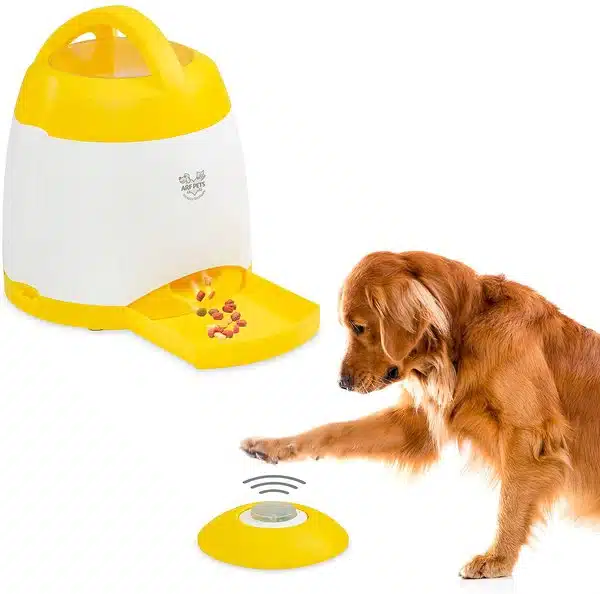By Will Bangura, M.S., CDBC, CBCC-KA, CPDT-KA, FFCP (Dog Behaviorist) Certified Dog Behavior Consultant
Unlocking the Secrets of Canine Enrichment: A Comprehensive Guide to Effective Dog Training TechniquesDog training goes beyond mere obedience; it’s a comprehensive approach to understanding your dog’s individual needs, behavior, and psychology. Among the numerous strategies that can be employed in dog training, the concept of canine enrichment stands out. This facet is pivotal to enhancing a dog’s physical and mental well-being, ultimately making them happier, healthier, and more in sync with their environment (McGowan et al., 2014).
The Power of Contra-Free Loading
When we talk about canine enrichment, the phenomenon of contra-free loading is intriguing yet often overlooked. This term refers to a dog’s innate preference to work for their sustenance rather than receiving it without effort. Contrary to what some may believe, dogs derive pleasure and mental stimulation from working for their food.
To put this into practice, consider incorporating a puzzle feeder or a food-dispensing toy into your dog’s routine. Utilizing these tools not only keeps your pet engaged but also capitalizes on their natural inclination to seek and forage. Moreover, when you use food as a reward, you’re contributing to their cognitive development, as the act itself serves as a stimulating mental exercise (Burns, 2018).
The Art of Timing and Reward
Precise timing is an invaluable aspect of any effective training regime. One popular method that enhances the timing of rewards is marker training. Marker training employs distinct auditory or visual cues to communicate exactly when the dog has performed a desirable action. For example, a clicker or a specific word can serve as a marker to signal to the dog that a reward is imminent.
The effectiveness of marker training is its ability to foster clearer communication between you and your pet. When employed correctly, this method facilitates quicker learning and more consistent behavior (Feng et al., 2018). Furthermore, varying the types and timings of rewards can maintain your dog’s motivation and eagerness to learn.
The Cornerstone of Positive Reinforcement
Positive reinforcement is a universally recommended technique in dog training (Hiby et al., 2004). Essentially, the practice involves rewarding your pet for demonstrating desired behaviors, thereby increasing the likelihood of such behaviors being repeated.
For instance, if your dog has a tendency to jump up on people, teaching them an alternative behavior, like sitting, can effectively mitigate this issue. Every time your pet chooses to sit instead of jump, reward them immediately. Over time, this positive association will lead your dog to opt for the more desirable behavior.
More Than Entertainment
It’s crucial to remember that your dog’s behavior is not merely for your amusement; it’s a direct reflection of their needs, environment, and the training they’ve received. Proactive management of potentially aggressive situations is vital for maintaining a safe and harmonious household. By understanding your pet’s behavioral cues and addressing them adequately, you can preclude many common behavioral issues.
Conclusion
An informed pet parent makes for a content and well-behaved pet. By understanding your pet’s unique needs, employing effective techniques like contra-free loading and marker training, and harnessing the power of positive reinforcement, you can significantly improve your dog’s quality of life. Let’s work together to make our pets’ lives richer and more fulfilling.
References
- Burns, G. (2018). “The importance of foraging and feeding enrichment for dogs.” Journal of Veterinary Behavior.
- Feng, L.C., Howell, T.J., & Bennett, P.C. (2018). “How clicker training works: Comparing Reinforcing, marking, and bridging hypotheses.” Applied Animal Behaviour Science.
- Hiby, E.F., Rooney, N.J., & Bradshaw, J.W.S. (2004). “Dog training methods: their use, effectiveness and interaction with behaviour and welfare.” Animal Welfare.
- McGowan, R.T.S., Rehn, T., Norling, Y., & Keeling, L.J. (2014). “Positive affect and learning: exploring the “Eureka Effect” in dogs.” Animal Cognition.
This guide is meant to serve as a comprehensive overview for both professionals in the field of dog behavior and pet parents with no prior knowledge. It is based on current, verified practices and aims to offer practical, step-by-step insights into dog training and enrichment.


